the presence
the artistic work of Hanspeter Gempeler
Human beings first establish themselves in the world through their ability to perceive. Fascinated by this process whereby the world and the subject arise, Hanspeter Gempeler explores, in the media of painting, drawing, graphics, installations and book projects, how we in the process of seeing and perceiving continually (have to) create our own picture of the world.
Questions about the nature of our experience of reality are also, in the context of Buddhist philosophy in which the artist has long been interested, of central concern.
Silent turbulence In his most recent works the artist deals with findings that emerge from the tension between the visible and the hidden, the present and the absent. As is the case in the delicate lace-fabric in the work ‹the presence of absence› which at first suggests the presence of a person, but prooves on closer inspection to be empty. It is this brief, but significant moment of lingering in uncertainty which permits the not yet perceived to become visible and the absent to be present.
In the precise English titles of his works, the poetic potential of language meets the image. Interested in the close and complex interplay between image and text Gempeler abandons visual statements entirely in the project ‹titles of not (yet) existing drawings›. With short narrative fragments, such as «criminally shy,» «be melting snow» or «the advantage is yours» the artist leaves the viewer with a building still under construction whose rooms stand wide open for inspection.
Gempeler sees the process of perception as particularly present in the transparency and openess of drawing. The publication ‹how deep is your pool› (Stämpfli Verlag 2010 with essays by Alice Henkes and Dominik Imhof) grants an insight into his extensive body of drawings. Looking through this beautifully designed book, one encounters an alluring pool of reflections.
Distant shores Gempeler’s extensive travels and locally gained experiences awakened in him early on an awareness of the simultaneity of different worlds.
He was exposed to intense experiences of alienation and cultural difference during his scholarship stay abroad in 2010 in the northern Indian city of Varanasi on the banks of the river Ganges. Intrigued and challenged by the contrast between the mythological conception and the metropolitan reality, the artist develops in his project ‹welcome to the deep and dark forest of bliss› his site specific works. Based on the exact time of origin of a drawing, he asks the astrologer Dr. Rakesh Joshi to predict the future of the artwork ‹seeing into the future of art› and in ‹emptiness re-established› he requests the monk scholar Swami Jagernath to erase the artists drawing of an ascetic.
Into the woods Nature as perceptual field is repeatedly present in Gempeler’s work, in the form of shaded shores, reflecting ponds and deep forests. The forest as a scary place beyond the familiar open terrain, but also as a place of enchantment, owes its attraction, as does the lace fabric, largely to the fact that in the dense wood, as well as in the textile braid, much remains hidden – and indeed has to. In the works ‹the hiding› and ‹even ten mirrors wont tell› a network of tree trunks, branches and foliage allow only sporadic glimpses of the pictorial space. Even a slight change of position would result in the visibility of the otherwise hidden. The artist expands the limiting subjectivity of the observer’s position by showing the same pond from various changing perspectives.
«Nature, as represented in Hanspeter Gempeler’s masterful watercolours, is decidedly not hostile, but rather an almost incomprehensible and nearly impenetrable power that has no need of mankind» (Alice Henkes, 2010).
Which truth The interest in the contradictions and inconsistencies of the subjective experience of reality lies at the heart of the publication ‹Memory Tank› (2000). The process of dealing with personal history and hence the questions about biographical truth are at its centre. Elisabeth Gerber writes: «With ‹Memory Tank› Hanspeter Gempeler designs a thought and association space in which the process of remembering appears to be as complex and intricate as a rhizome like mesh.»
‹Search in all directions› is the title of a new work that corresponds in many ways with the ramified thinking space from which the artist develops his complex work. It shows an actor looking through a gap in a stage curtain into the auditorium and through this reversal of perspective puts the viewer himself into question. Aware that our knowledge of the world can only be provisional, the artist always reflects – while taking changing perspectives in his works – new aspects of a process based reality.
In his enigmatic works, the present and the emergent create an atmospheric thought and perception space that adds up to more than mere representation. By referring to the potential of the possible they point at the same time far beyond the given.
Publications
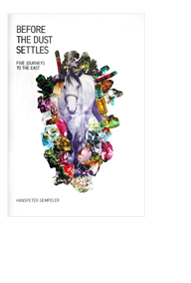
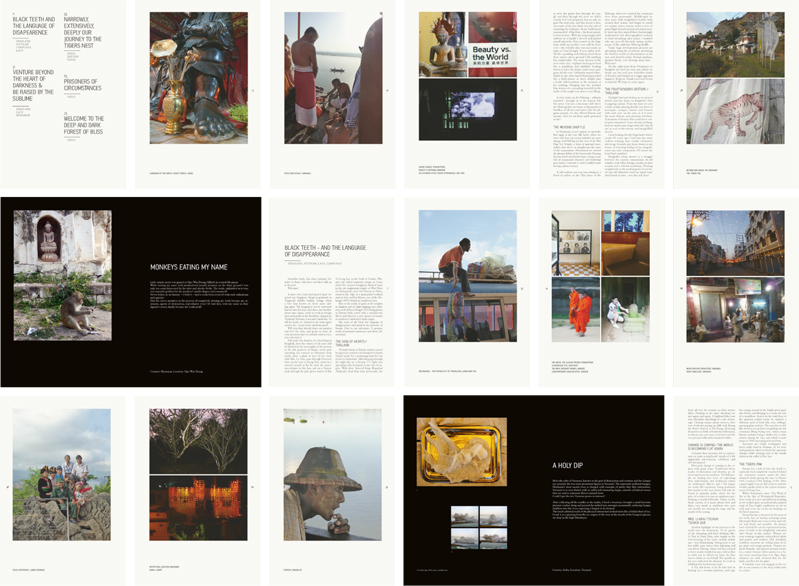
before the dust settles Starting with his 6 month scholarship residency (2010) in what is probably India’s most challenging city, Varanasi, the artist invites the reader to travel with him in India, Bhutan, Thailand, Cambodia, Vietnam, Myanmar, and Laos. Initially addressed exclusively to the artist‘s close friends, ‹before the dust settles› is the first presentation of Gempeler’s travel reports. In this project art and travel are seen as different journeys with the same goal: being in touch with the unexplored.
The book introduces to date unknown projects realized while on the road. The artist gets monkeys to eat his name in Myanmar, creates a wax sculpture with the help of the river Ganges in India, learns to hear the language of disappearance in Laos and Cambodia and asks a young monk in Bhutan three simple questions. Rich in detail and told with warmth and sensivity ‹before the dust settles› is at the same time both field report and art project.
text & pictures: Hanspeter Gempeler
limited edition of 47 pcs. © Hanspeter Gempeler, ISBN 978-38-823760-8
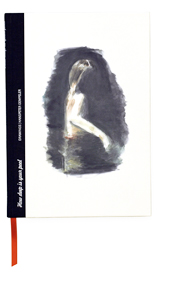
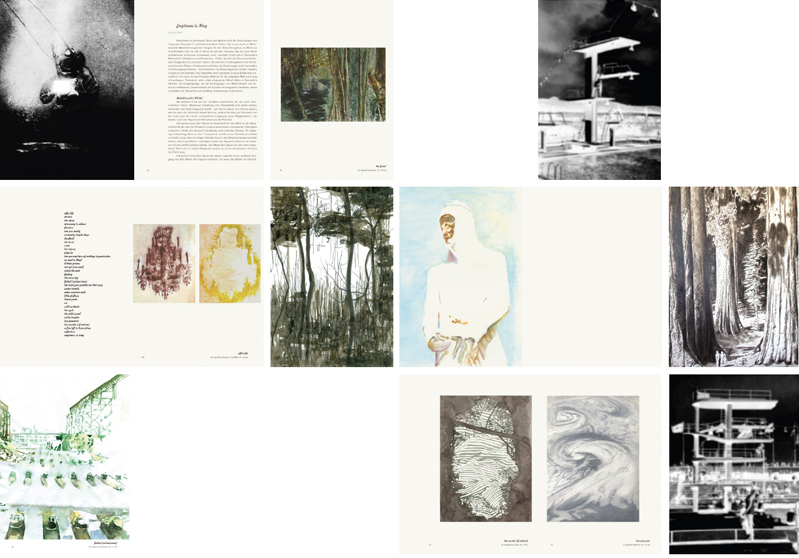
how deep is your pool (texte: alice henkes, dominik imhof, stämpfli verlag), 2010, ISBN 978-3-7272-1124-9
In ‹how deep is your pool› sind Aquarelle und Zeichnungen von Hanspeter Gempeler zu sehen, die im Laufe der letzten Jahre entstanden sind. In seiner künstlerischen Arbeit setzt sich Gempeler mit Fragen des Wahrnehmens und Erkennens auseinander. Seine Zeichnungen sind von einer Transparenz, die sich endgültigem Erkennen und Einordnen widersetzt, um eher von Erfahrung, Suchen und Unmittelbarkeit zu berichten. Der Künstler erforscht in diesen vielschichtigen Arbeiten, wie wir uns im Prozess des Sehens und Wahrnehmens fortwährend ein eigenes Bild der Welt machen (müssen). Seine poetische Wirklichkeitsbefragung öffnet dem Betrachter mit einer an japanische Haikus gemahnenden Leichtigkeit vielschichtige Wahrnehmungsfelder.Wer in diesem mit grosser Sorgfalt gestalteten Buch blättert, wird in Gempelers meisterlichen Aquarellen auf einen verlockend spiegelnden Pool stossen und dabei dem Wunsch selber einzutauchen kaum widerstehen wollen.
text: Alice Henkes, Dominik Imhof
© Stämpfli Verlag, ISBN 978-3-7272-1124-9
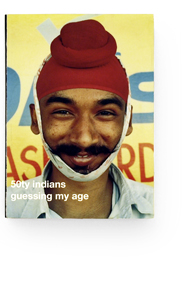
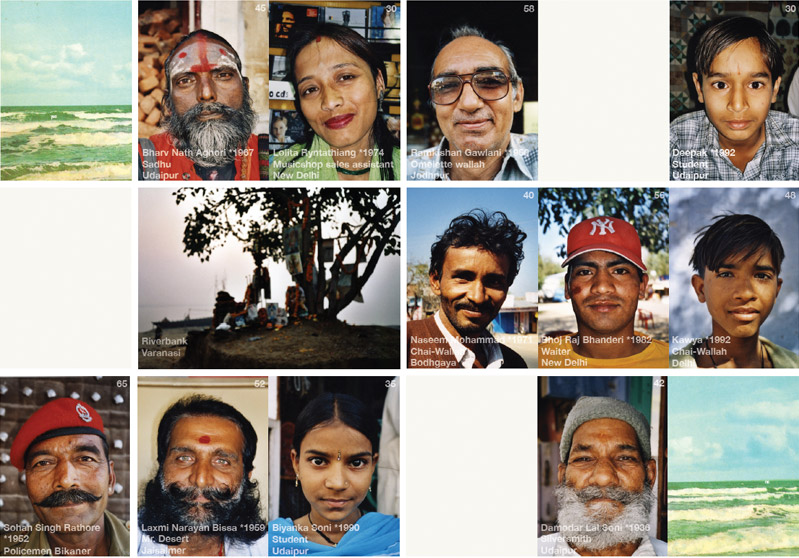
fifty indians guessing my age (this medicin works edition), 2005
Dreissig Jahre nach seiner ersten Reise begibt sich Gempeler erneut auf den Weg nach Indien. Dort angekommen, bittet er anlässlich seines bevorstehenden Geburtstages fünfzig Inder und Inderinnen sein Alter zu schätzen. Mit diesem Zugang gelingt es Gempeler, wie bereits in früheren Arbeiten, individuelle Wahrnehmungsweisen zu thematisieren. Gestalterisch auf das Wesentliche reduziert, gewährt das vorliegende Künstlerbuch Einblick in dieses ungewöhnliche Projekt. Wir sehen die Portraits der von Gempeler befragten Personen und lassen uns von ihren Antworten überraschen. Mit dem Künstlerbuch ‹fifty Indians guessing my age› ist ein Dokument entstanden, welches Gempelers tiefe Verbundenheit mit diesem Land und seinen Menschen auf überraschende Weise zum Ausdruck bringt.
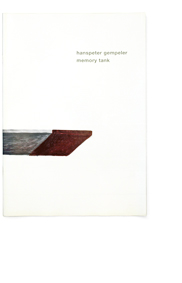
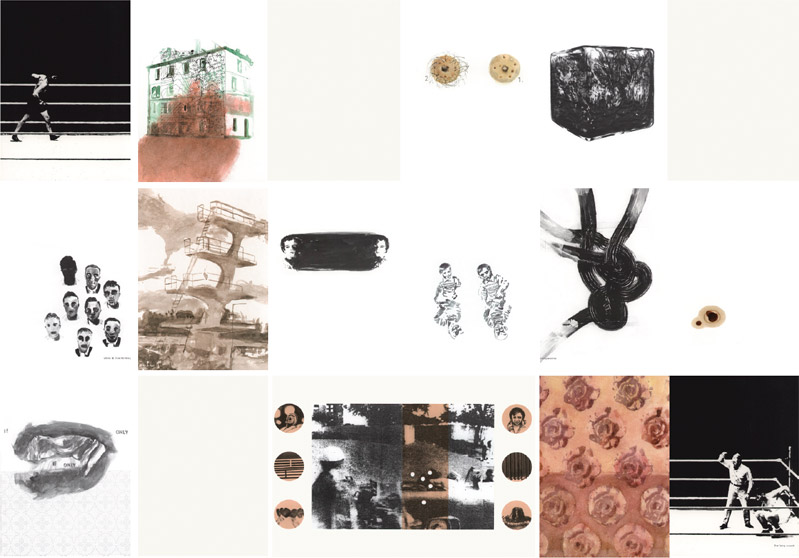
memory tank (künstlerheft, text elisabeth gerber; report edition), 2000, ISBN 3-907591-04-6
Mit ‹memory tank› entwirft Hanspeter Gempeler einen Denk- und Assoziationsraum, in dem der Prozess des Erinnerns als ein komplexes und verschlungenes, ja als ein sich rhizomartig gebärdendes Geflecht erscheint. Wer sich darauf einlässt, wer sich von den teils vertrauten, teils rätselhaften Bildern verführen lässt, taucht unmittelbar ein in einen mentalen Raum ausserhalb physikalischer Raum- und Zeitkategorien. Er begibt sich in ein Labyrinth, in dem sich Gegenwart und Vergangenheit in verwirrender Weise überlagern, durchdringen, entgegenstehen. (…)«exposed», ausgesetzt, belichtet: so heisst der mehrdeutige Titel einer Zeichnung. Wer setzt sich aus? Ist es die Erinnerung? Ist es das Erinnerte oder sind es diejenigen, welche sich erinnern? Die enge Verknüpfung verschiedenster Fragen macht deutlich, dass am Erinnerungsprozess stets mehrere Faktoren gleichwertig beteiligt sind: die Vorstellungen darüber, wie und weshalb Vergangenes und Vergessenes wieder ins Bewusstsein gelangt. (…) Wir sehen uns mit einem Erinnerungskonzept konfrontiert, das jeglicher Linearität und Kausalität spottet, ja misstraut. Verworfen wird für unsere nachmoderne Gesellschaft die Vorstellung, die wahre Geschichte noch erzählen zu können. Zu pluralistisch und zu heterogen scheint die Gegenwart zu sein und damit der gesellschaftlich bestimmte Ort von dem aus zurückgeblickt wird. Zu sehr sieht sich das sich erinnernde Subjekt in die gesellschaftliche Struktur hineinverflochten, hat sich die Möglichkeit, einen Standpunkt ausserhalb des Geschehens einnehmen zu können, als Fiktion erwiesen.
Text: Elisabeth Gerber
©2000 by report and artists, ISBN 3-907591-04-6
Bibliography
- Tobler, Konrad: «Spick dich weg und sehn dich zurück». In: der Bund, Bern, 9. Juli 2013.
- Steffen, Christina: «Fernweh in eine Glasflasche gefüllt». In: Berner Zeitung, Bern, 2. Juli 2013.
- Henkes, Alice: «Der Vorhang öffnet sich». In: der Bund, Bern, 13. April 2012.
- Henkes, Alice: «Geheimnisse der Natur und der Erkenntnis».
In: Kunstschaffend. Kunstgesellschaft Thun, Thun 2010.
- Burkard, Philipp und Gempeler, Hanspeter: «The true artist helps the world by revealing mystic truth».
Interview in: Kulturzeiger. Kulturabteilung Stadt Thun, Thun 2010.
- Mühlemann, Marianne: «Wirklichkeitsbefragung; Kunst»: Kurzausstellung und Buchpräsentation.
In: der Bund, Bern, 20. Mai 2010
- Henkes, Alice: Im Teich der Anspielungen und Ideen. In: «How deep is your pool».
Stämpfli Verlag, Bern 2010. ISBN 978-3-7272-1124-9
- Imhof, Dominik: Emptiness is king. In: «How deep is your pool».
Stämpfli Verlag, Bern 2010. ISBN 978-3-7272-1124-9
- Gerber, Elisabeth: «memory tank». In: «memory tank». Report Edition, Thun 2000. ISBN 3-907591-01-1
- Pfister, Sarah: «Gespiegelte Schätze». In: der Bund, Bern, 4. November 2008.